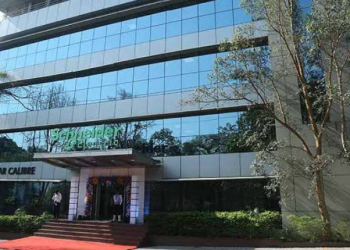New Delhi: India’s installed solar power capacity, as of December 31, 2021, was 49.35 GW as against the target of 100 GW in seven years starting from 2014-15 under the National Solar Mission (NSM), the Economic Survey 2021-22 said.
India revised its targets for renewable energy when Prime Minister Narendra Modi, at the annual climate conference, promised installation of 500 GW non fossil energy capacity by 2030, reduction in emissions intensity of GDP by 45 per cent over 2005 levels, 50 per cent electric installed capacity coming from non-fossil sources by 2030, 1 billion tonnes reduction in carbon emissions till 2030 and India to become net-zero by 2070.
Keeping in tune with the renewed targets, India has launched multi-pronged programmes to achieve solar and wind energy, as part of the renewable energy targets set for combating climate change.
The Pradhan Mantri Kisan Urja Suraksha evam Utthaan Mahabhiyan (PM-KUSUM) Scheme to provide energy and water security, de-dieselise the farm sector and generate additional income for farmers by producing solar power aims to add 30.8 GW of solar capacity with central financial support of over Rs 34,000 crore.
Installation of 10,000 MW of decentralised grid connected solar power plants each of capacity up to 2 MW, setting up of 20 lakh standalone solar powered agriculture pumps, and polarisation of 15 lakh existing grid-connected agriculture pumps is envisaged under the scheme that have been included by the RBI under Priority Sector Lending Guidelines for easing availability of finance.
“As of December 31, 2021 over 77,000 standalone solar pumps, 25.25 MW capacity solar power plants and over 1,026 pumps were salaried under individual pump polarisation variants. Implementation of the feeder level polarisation variant under the last component, which was introduced in December 2020, has also started in a number of states,” the Economic Survey said.
For large scale grid connected solar power projects, ‘Development of Solar Parks and Ultra Mega Solar Power Projects’ is under implementation with a target capacity of 40 GW capacity by March 2024. So far, 50 solar parks have been sanctioned with a combined capacity of 33.82 GW in 14 states. Solar power projects of an aggregate capacity of around 9.2 GW have already been commissioned in these parks.
Roof Top Solar Programme Phase-II for accelerated deployment of solar roof top systems, with a target of 40 GW installed capacity by December 2022, is also under implementation. The scheme provides financial assistance for up to 4 GW of solar roof top capacity to the residential sector and there is a provision to incentivise the distribution companies for incremental achievement over the previous year.
So far, a cumulative 5.87 GW solar roof top projects have been set up in the country, the Survey said.
A scheme for setting up 12 GW Grid-Connected Solar PV Power Projects by government entities (including Central Public Sector Undertakings) is under implementation. Viability Gap funding support is provided under this scheme. Under this scheme, the government has so far sanctioned around 8.2 GW of projects.
Till December 2021, over 1.45 lakh solar street lights were installed, 9.14 lakh solar study lamps were distributed, and about 2.5 MW solar power packs were set up as reported by state nodal agencies.
Along with this, the Ministry of New and Renewable Energy has notified the wind solar hybrid policy, providing a framework for promotion of large grid connected wind-solar PV hybrid projects for optimal and efficient utilisation of transmission infrastructure and land, reducing the variability in renewable power generation, and achieving better grid stability.
As of December 31, 2021, capacity of around 4.25 GW of wind-solar hybrids have been awarded, out of which 0.2 GW is already commissioned and additional capacity of 1.2 GW wind-solar hybrid projects are at various stages of bidding.
(IANS)

















